Is it possible to feed a dog with natural and dry food at the same time and how to do it right?

The health, longevity and appearance of the dog is largely determined by the nutrition of the dog. There are two main options - dry food and natural nutrition. As you know, experts do not recommend combining them. But if you still have to do this, how to combine dry and natural food with the least harm to the pet?
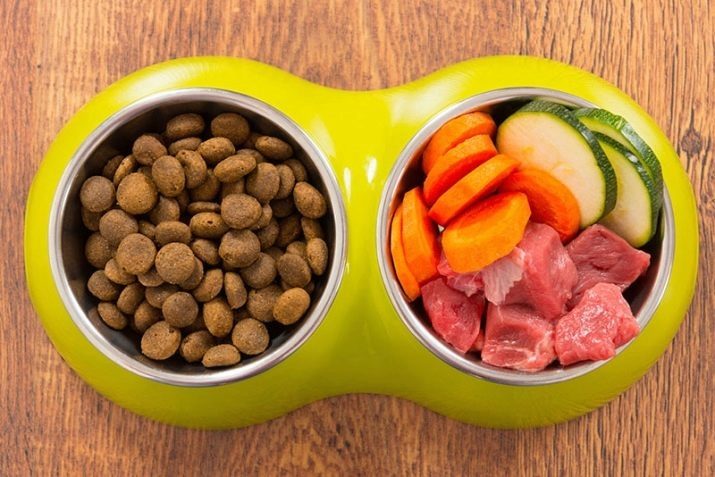
Advantages and disadvantages
Natural food and dry product have advantages and disadvantages. Before talking about this in more detail and about why it is impossible to feed a dog with different types of food at the same time, it is worthwhile to clarify. Natural - this is the diet that best matches the natural nutrition of the dog, and she, by the way, is a predator. Based on this, it should be understood that the basis of its nutrition is animal protein, in other words, meat, and mostly raw. Supplement the diet with carbohydrates, vegetables and herbs. Many dog owners confuse the term “natural nutrition” with the concept of “food from the table,” which is fundamentally wrong.
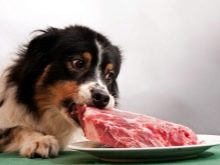
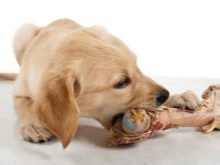

As for dry food, its types can have different composition and nutritional value. The lowest quality food is economy class, which experts do not recommend using to feed the dog. There are also premium feeds, super premium feeds and holostics. In this case, they are arranged in order of increasing quality and nutritional value of the product.
Holivics appeared relatively recently and are characterized by the most natural composition. However, not every owner can allow them to his pet.In principle, analogues of the super-premium class are not much inferior to holists in quality, until the latter they were considered the best option.
Now you can begin to compare the natural diet with ready-made food of a class not lower than super-premium.
The main advantage of natural feed is its environmental friendliness. The owner personally prepares food for his pet, sees and evaluates the quality of the raw materials. She will not use obviously unsuitable products, feed her pet with food that has expired.
As for store feeds, even buying an expensive product, one cannot be sure of the high quality of the feedstock. This confidence is reduced in proportion to the decline in feed quality.
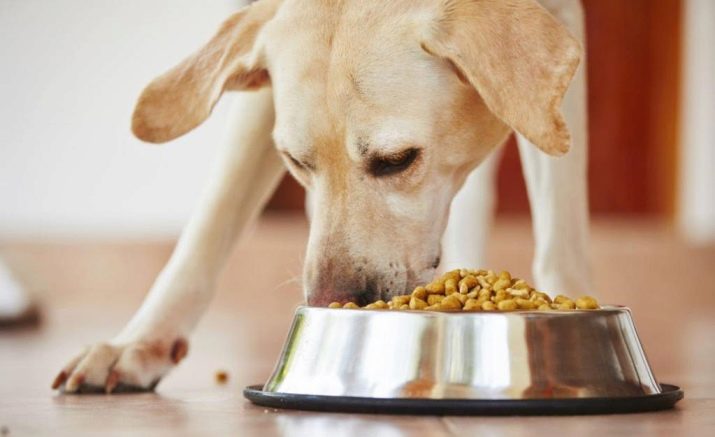
For the health, longevity and attractiveness of the pet, it is important that the diet is saturated, balanced. It is quite difficult to calculate the required amount of proteins, fats and carbohydrates with your own hands, so that natural nutrition is rarely balanced. Most breeders also can’t understand exactly how much food the pet needs and whether the diet fits in the daily calorie content. In most cases, when feeding natural food, the animal is overfed. If at the same time the dog leads a passive lifestyle, it is a breed prone to weight gain or the individual is already elderly, then regular overfeeding is a direct way to obesity, heart and intestinal problems.
Buying a high-quality ready-made feed, the owner can be sure that the balance of the BFU is maintained in it, and thanks to information from the manufacturer it is possible to easily determine the portion size. Thus, dry is a more balanced and nutritious version of the dog's diet. However, it is important to make an amendment - such is only high-quality feed, the price of which is above average.

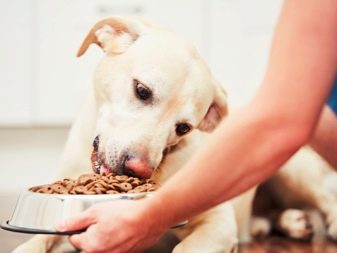
Cheaper options are skewed towards vegetable protein, allergenic carbohydrates (corn, wheat, soy) and fats. The nutritional value of such food is low, so the animal is either overfed (again with fatty food), or experiences a feeling of hunger.
The next evaluation criterion is usability. Undoubtedly, the purchase of ingredients and the preparation of natural food requires time and effort from the owner. Although, according to the recognition of experienced dog breeders, if you buy ingredients and harvest them for the future (for example, cut to freeze meat for several days at once), this does not take too much time.
With purchased food, of course, easier. but some elite varieties can not always be found in the public domain, you have to order them from official representatives or in online stores.
Another point is the need to purchase additional elements, in particular, the vitamin-mineral complex. As part of high-quality feed, it is already present. If the dog is on natural nutrition, then be sure to mix it with food or give vitamins and minerals separately.
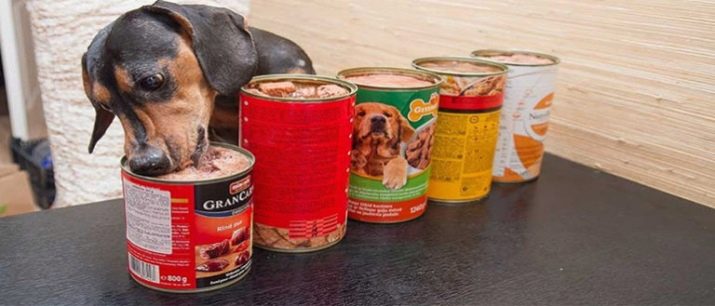
When can a combination be allowed?
Veterinarians talk about the inadmissibility of mixed nutrition, because when digesting dry food and natural food, the intestines of the animal function differently.
However, there are times when mixed nutrition cannot be avoided; there may be different situations among them.
- Feeding puppies in the nursery. Breeders intentionally add sour-milk products, cottage cheese, vegetables or greens to the dry food so that the animal can easily adapt to any type of food in the future, because it is not yet known which scheme the future owner will choose for the pet.
- Keeping a puppy dog or pedigree dog. This category of animals requires food with a high concentration of nutrients, as a rule, the basis of the diet is the usual food for the dog (natural or granules), but an alternative is added to it.
- Large breeds of dogs - hunting, workers, sports. For this group of animals should choose a menu in which there is an increased (approximately 30% compared to the standard) amount of protein. If the dog receives dry food, then the only way to increase the protein in his diet is to additionally fatten it with meat, eggs, cottage cheese.
- Fastidious dogs. As a rule, fickles eat only meat from natural food, leaving vegetables and cereals. However, with such a diet, very soon they will have a deficiency of carbohydrates, fiber and vitamins in the body. And protein without vegetables will not be fully absorbed. Here, dry food comes to the aid of the owner. If the whim refuses granules, you can try to give wet food.
- Pet Promotion There are special encouraging goodies for training an animal. However, in their absence, it is convenient to take dry granules for a walk, using them as an encouragement in teaching teams. In other cases, on the contrary, a piece of meat, favorite vegetables or fruits can be a way to treat a pet who is on dry food.
- Travel, rest. These are cases of forced mixing of types of feeding. On the road, there is usually no way to feed the animal with natural food, so the owner temporarily transfers the pet to dry granules. However, you can’t just take ready food on the road and offer it to the animal, the transition should be smooth, and begin 3-5 days before the trip.


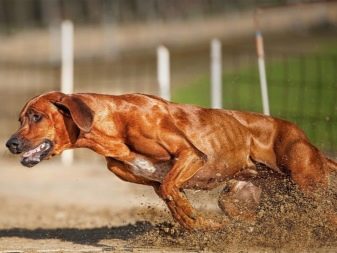

In these cases, it is allowed to combine different types of food, but it is still better to alternate them and not give different types of food in one go. We must not forget that dry granules are moistened with animal saliva before they enter the stomach and begin to be digested. If you give granules along with natural food, such as porridge, then saliva is not enough to soak the granules, which can cause digestive problems in the animal.
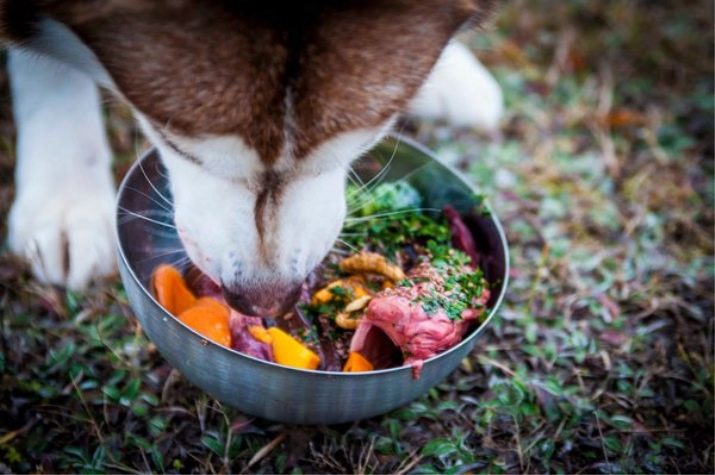
What to give with dry food?
If it is better not to combine natural food with dry food, then it is possible to make additives from the diet of natural products to prepared granules. In other words, a combination of the main diet of dry food with natural products is permissible. To do the opposite (when the basis is natural food) is not recommended.
Dry granules can be given fresh fruits, vegetables, herbs. They should be cut into small pieces. It is better to boil potatoes or bake in their uniforms. Among the allowed vegetables are carrots, cucumbers, tomatoes, pumpkin. Cabbage and legumes should be avoided, as they contribute to gas formation in dogs. Do not give the animal onions and garlic.
Dry food can be combined with dairy products, as a rule, this is kefir, fermented baked milk, cottage cheese. They should not be fat-free, however, as well as too fat. For kefir and ryazhenka, fat content of 1.5-2.5% is enough, for cottage cheese - no more than 5%.
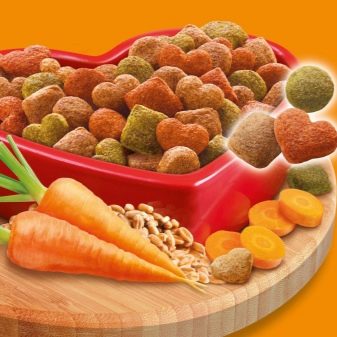
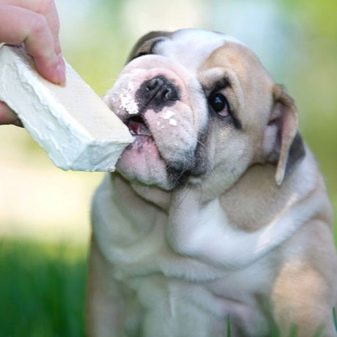
It is permissible to give dry food, meat, seafood, offal at one meal. Meat - beef, chicken, turkey, rabbit, lamb. It is better not to give pork, it is too fat and even after 12 hours of freezing and scalding with boiling water, parasite larvae can remain in it. If the dog is prone to allergies, chicken and beef should be discarded. The meat is given raw, previously keeping it in the freezer for several hours.
The fish should be marine, offer it to the dog only in boiled form (cook without salt). Allowed by-products are chicken necks, liver, stomachs, hearts. It is unacceptable to give the dog chicken paws, offal, intestines. Offal is also pre-frozen, and scalded with boiling water before feeding.
Quail and chicken eggs can also be added to dry food. It is better to give proteins in raw or boiled form. If we are talking about puppies, lactating and pregnant dogs, working individuals and pets that lead an active lifestyle, it is permissible to feed them with yolks.
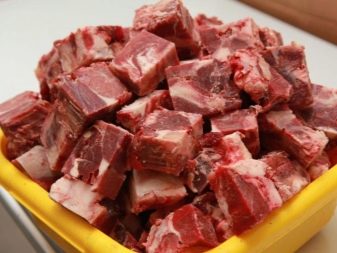
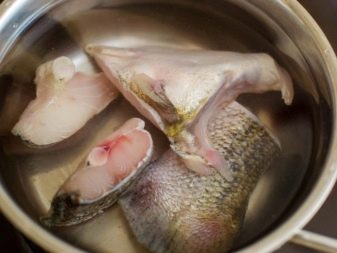
Is it possible to alternate types of feeding?
The answer to the question about the possibility of alternating types of nutrition is generally positive.Of course, you should not do this on purpose, but if there is a vital need, then the most acceptable option is alternation.
Wherein it is important to remember that the time to digest different types of food is also different. Natural food after 40 minutes enters the stomach, and it takes about 2 hours to complete digestion. Dry options take longer to digest - from 3 to 5 hours. If you are used to feeding the dog often (usually this applies to animals during the growth period, that is, up to 8-12 months), then this should be taken into account. Perhaps, when you include granules in your daily diet, the next intake of natural food will have to be slightly shifted.
It is important to calculate the daily calorie content of the pet. It is easiest to divide it into 2 meals - put some of the calories in natural food, the rest of the calories in dry food. The latter is easier, since information from the manufacturer will help calculate the required amount of food. Just look how many kcal per 100 g of feed and make the appropriate calculations. So you will understand how much dry food you need to pour.
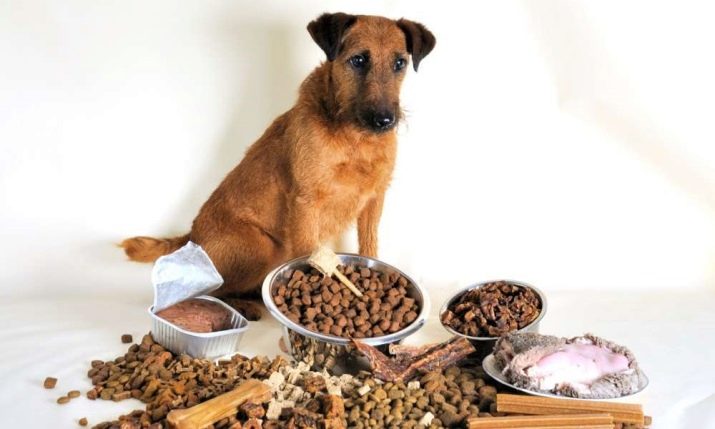
It will be more difficult to make such calculations with natural food. However, it is important to calculate everything thoroughly, without forgetting about the need to include vitamin-mineral supplements in the diet. If you plan to alternate types of food long enough, it is better to contact the veterinarian so that he builds the most balanced diet in which different types of food will alternate.
Veterinarians recommend dry food in the morning and natural food in the evening. It is necessary to evaluate the quality of the feed, if it contains a lot of cereals, then the amount of porridge should be reduced. If carbohydrate-free food is used, then, on the contrary, a pet can be given a little more cereal while eating natural food.
When choosing a carbohydrate-free food, it is unacceptable to leave the volume of the protein component in the natural diet unchanged. This will provoke an excess of protein in the body, which is dangerous for the liver and kidneys of dogs.
About the choice of feeding types for dogs that allow you to optimally combine your time, money and taking care of the dog’s health, see the video.







































